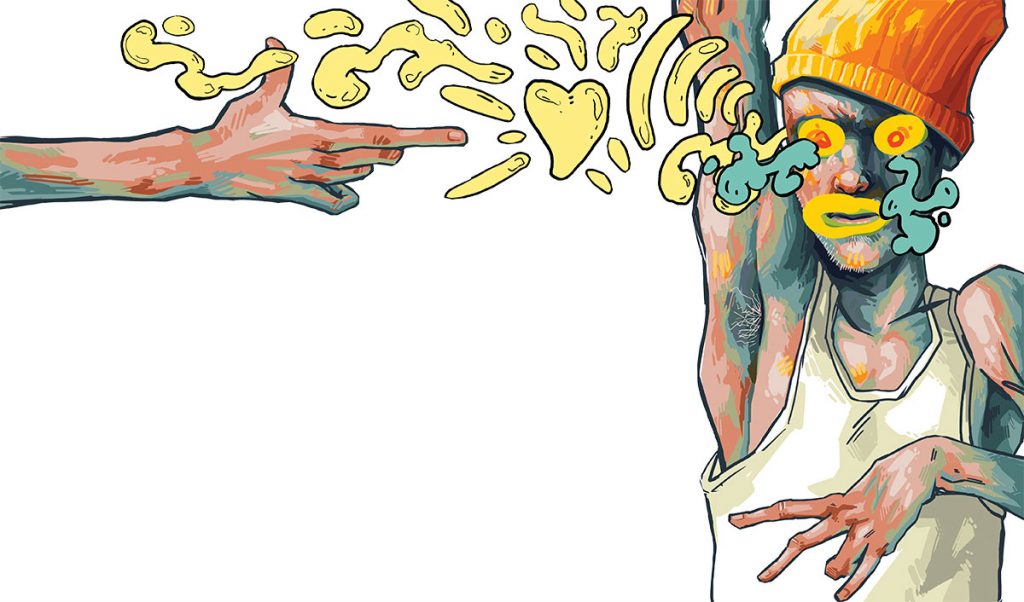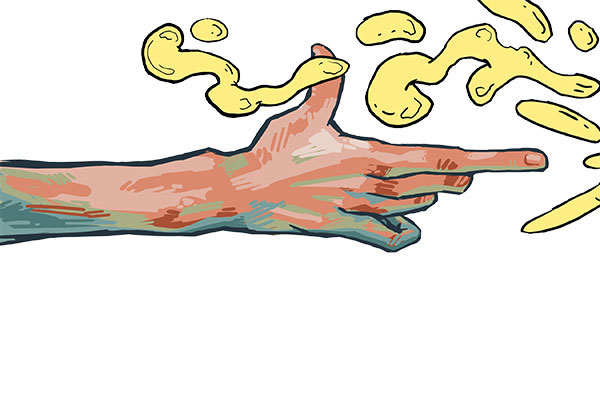WRITTEN BY MANAV CHORDIA | ILLUSTRATED BY ZACHERY EDDS

Since the beginning of human existence, we have used music to express societal and cultural ties. The creation and interpretation of music are intertwined with many basic human needs and are the result of thousands of years of neurobiological development — we probably sang before we made guided sounds of language. Sound and music were and still are universal concepts, that defy limitations and solidify connections.
In a more contemporary timeline, music and artists are expected to fit themselves into limited genres. A few decades ago, the best way to guarantee an album’s commercial success would largely be based on the aesthetic of the artist selling it.
Take Madonna’s iconic persona, a personification of a sex sells mentality, which came to bloom in the ’80s with her albums, “True Blue” and “Like a Prayer.” A decade before that, American rock band KISS rose to popularity because of its consistent heavy metal image. Music suited singular genres and audiences, and an opposing fluid and flexible artist just wasn’t successful.
But times seem to be changing. With the latest influx of younger, more fluid artists, music has become less of a category and more of an artist’s identity and the energy they choose to represent. Billie Eilish, the 18-year-old who cleaned up the major awards at this year’s 62nd Grammy Awards, is praised for creating music that transcends boundaries. In an interview with Vogue, the singer said, “I’m a rule-breaker. Or I’m anti-pop, or whatever. I’m flattered that people think that, but it’s like, where, though? What rule did I break? The rule about making classic pop music and dressing like a girly girl? I never said I’m not going to do that. I just didn’t do it.” Her music is pop, alternative R&B. The point is, she doesn’t fit into a box, or wants to.
Another Grammy winner, Tyler, The Creator said, “I mean guys that look like me, do anything that’s genre-bending or anything, they always put it in a rap or urban category.”
Nick Jourdan, a third-year animation student and general manager at SCAD Atlanta Radio, said, “I think award shows need to add more genres because there are tons of music that could, yes, fit into a ‘rap’ blanket, but why limit it to that.” He continued, “The [award shows] want to fit music into categories that are the safest and the most marketable. Once they see themselves as a place for accurate representation of music’s quality that’ll make all the difference.”
Another artist pioneering this is Lil Nas X, the artist behind the global hit “Old Town Road.” Considered to be the artist who popularized the country-rap genre, Lil Was X is praised for breaking the traditional mold of who is considered a rap artist. The rapper showed up to the Grammy Awards n an outfit that both embraced and rejected the ideals of both rap and country — a Barbie-pink Versace cowboy getup, decked in jewelry and gold.
And who can forget the seemingly out-of-nowhere rise of the flute-tooting sensation, Lizzo? Despite only achieving mainstream popularity in 2019, she released her first album six years ago and was co-signed by Prince before his death in 2016. In an interview with Rolling Stone in 2018, she said, “I’m too weird for the rappers and too Black for the Indies.” But her music isn’t the only child of rock, R&B, and hip-hop genres, rather, it is a blend of them creating a genre of its own.
Music is no longer expected to fit a certain sound nor be produced by a certain image. Change is coming, and the music industry better be ready.

